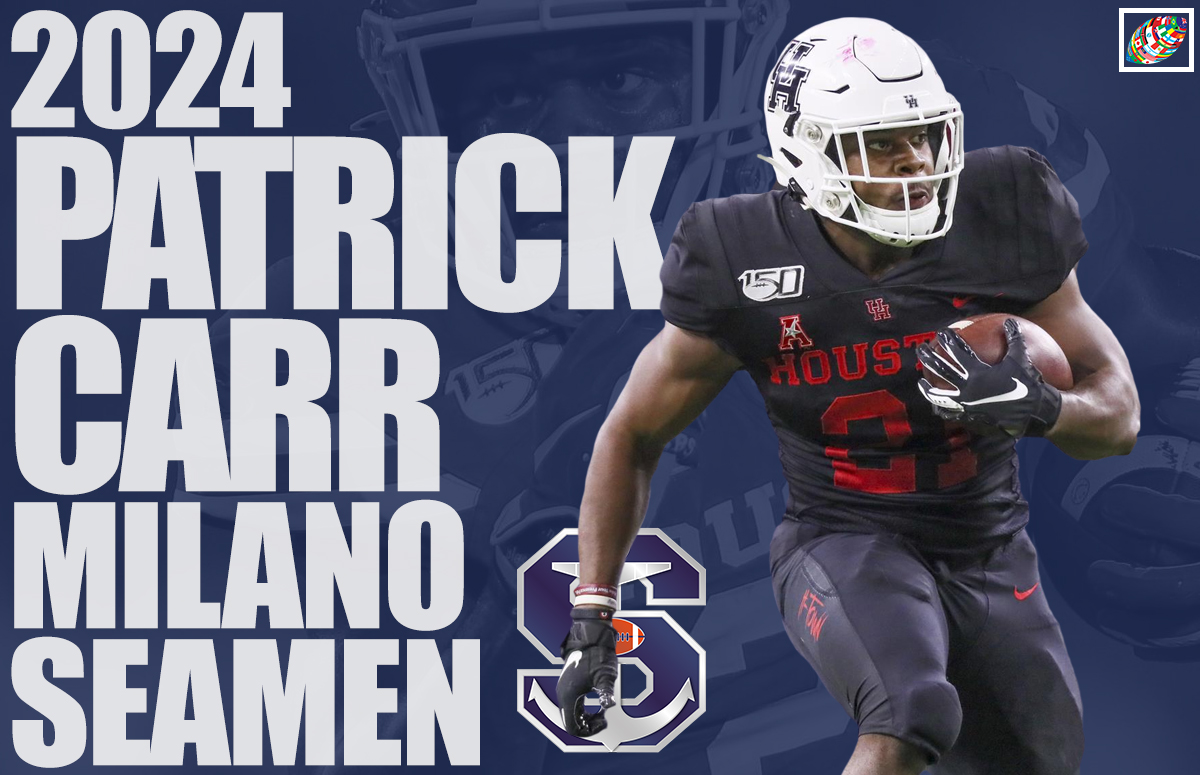Are American running backs soon a thing of the past in the ELF?
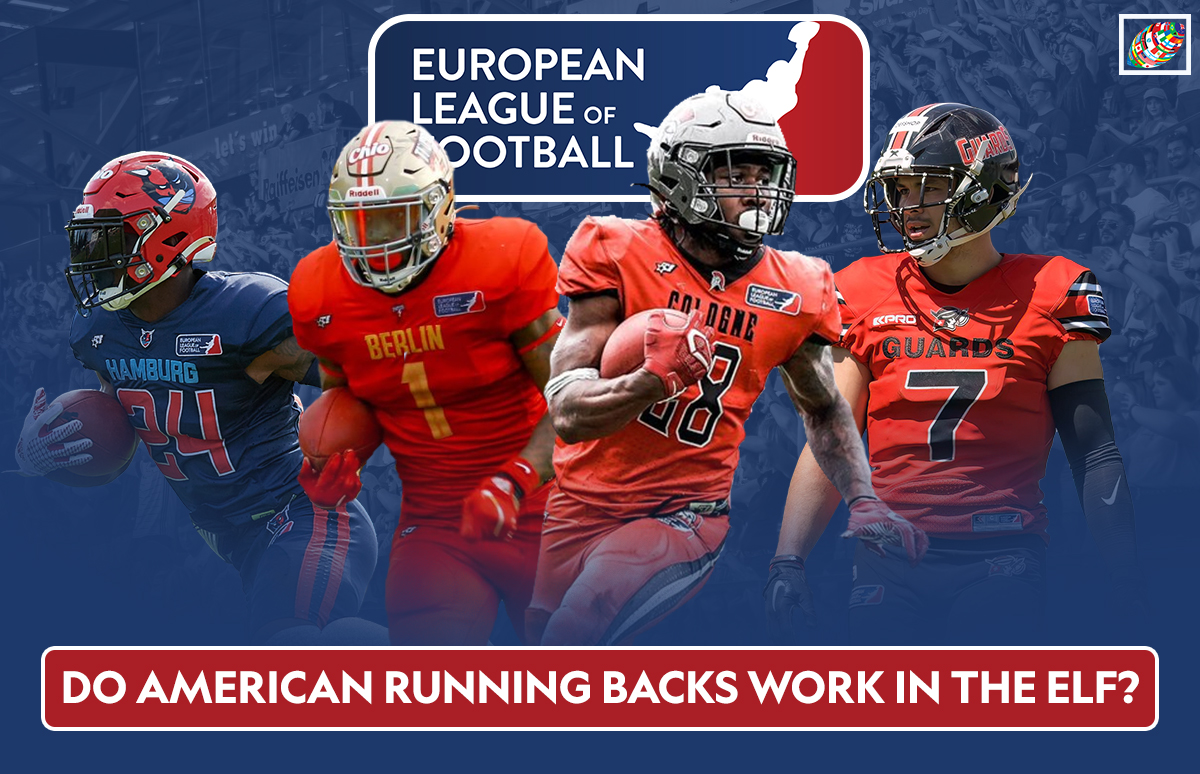
In recent years, the running back position has been going through monumental changes in all levels of football.
Interestingly, the European League of Football has seen similar changes in the space of only three years. The NFL has seen a Production-Value discussion within the top-paid running backs, whereas, in Europe, it’s been somewhat of a microcosm of the same problem. The difference is whether an American running back is worth one of the limited slots allocated to each team in the league.
We are starting in the first-ever season of the ELF for this hypothesis and shall discuss the changes we have seen in squad building over these three years. Let’s get into it.
American running backs predominant in 2021
In 2021, the league was exponentially different in quality of player, coach, and execution. The gap between the “superstars” was a lot broader as well. Madre London, who is widely considered the best running back in ELF history, achieved the 2,000-yard and 22 touchdown marks in only nine games. He also deservingly won the league’s first MVP award in a landslide.
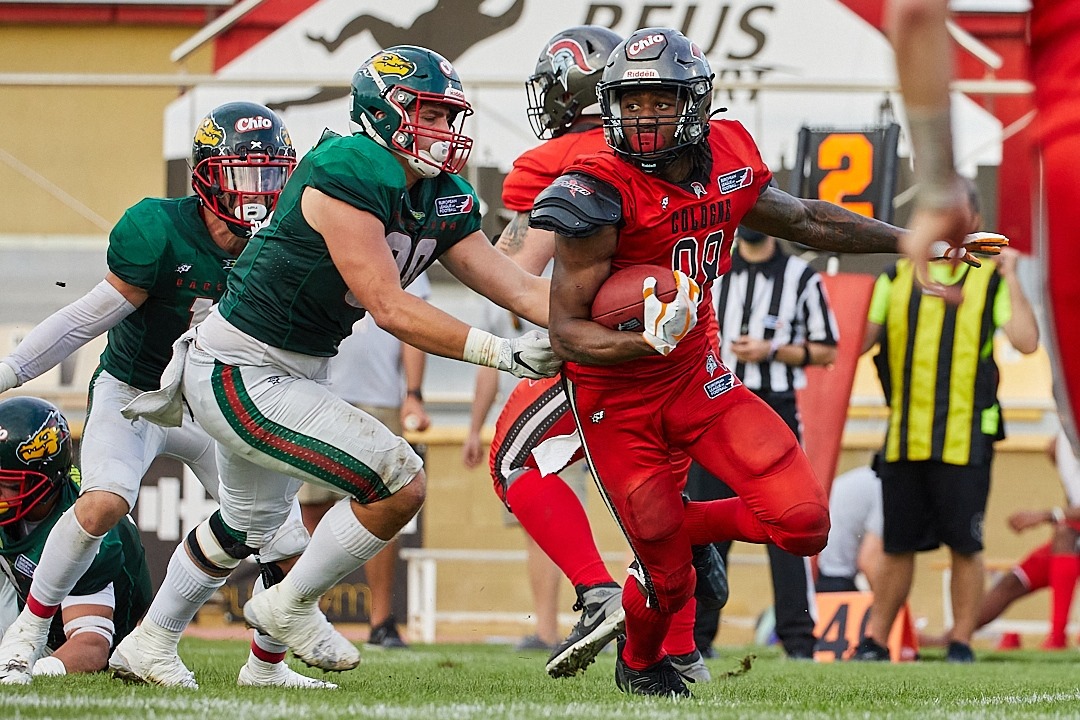
Madre London escaping defenders Photo: Cologne Centurions
Jocques Crawford of the Berlin Thunder was the second most successful rusher with 1,057 yards on the ground. Xavier Johnson (Hamburg Sea Devils) took the bronze medal with 714 yards. The gaps in these numbers are already rather striking, and of course, all were achieved by American runners. The highest rushing total for a European was Phileas Pasqualini. The French All-Star led all Europeans with 668 yards and 6 touchdowns. Hamburg and Cologne both had success with American running backs and each made the playoffs with Hamburg falling short in the final. The Berlin Thunder didn’t have the same success, but that has other factors for another topic. Overall, American running backs are fairly common and successful as evidenced by the fact that two of the best teams chose to build around an American backfield.
Transition began in 2022
In 2022, we saw some of the changes begin the come into play. Glen Toonga was the league’s leading rusher and MVP frontrunner with 1,468 yards and 21 touchdowns on the ground. Jocques Crawford was a familiar face from the season previous. Still, following London’s move to the USFL, there was a notable lack of higher-level American backs as many teams transitioned into American receivers. Notably, this was the second year in which only two players cracked the 1,000-yard mark. The number of 500-yard-plus rushers went from five in 2021 to six in 2023, showing a slight increase in quality from the offensive play calling, offensive lines and running backs.
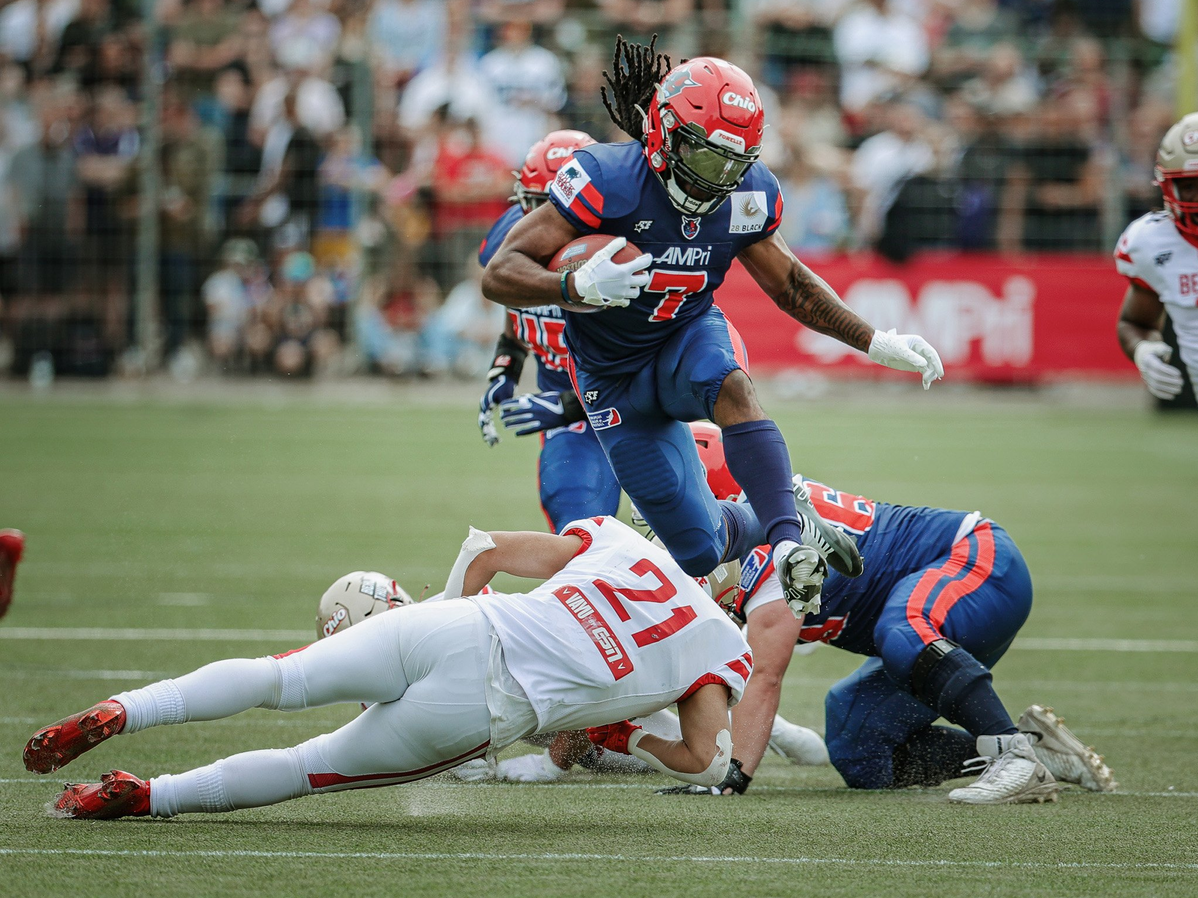
Glen Toonga leaping over Berlin Thunder defender. Photo: Michael Freitag
Both teams in the final had a European runner in the top three of the rushers this season with Toonga at 1st and Anton Wegan at 3rd.
Huge difference in 2023
The 2023 season saw teams nearly completely abandon the American running back archetype. The Leipzig Kings and Helvetic Guards were the sole teams to incorporate them with Steve McShane and Silas Nacita. McShane played five games and had 329 yards and two touchdowns. Nacita found more success but was only eighth ranked for rushing yards on the season, Zachary Edwards of the Paris Musketeers was the leading American rusher as a quarterback.
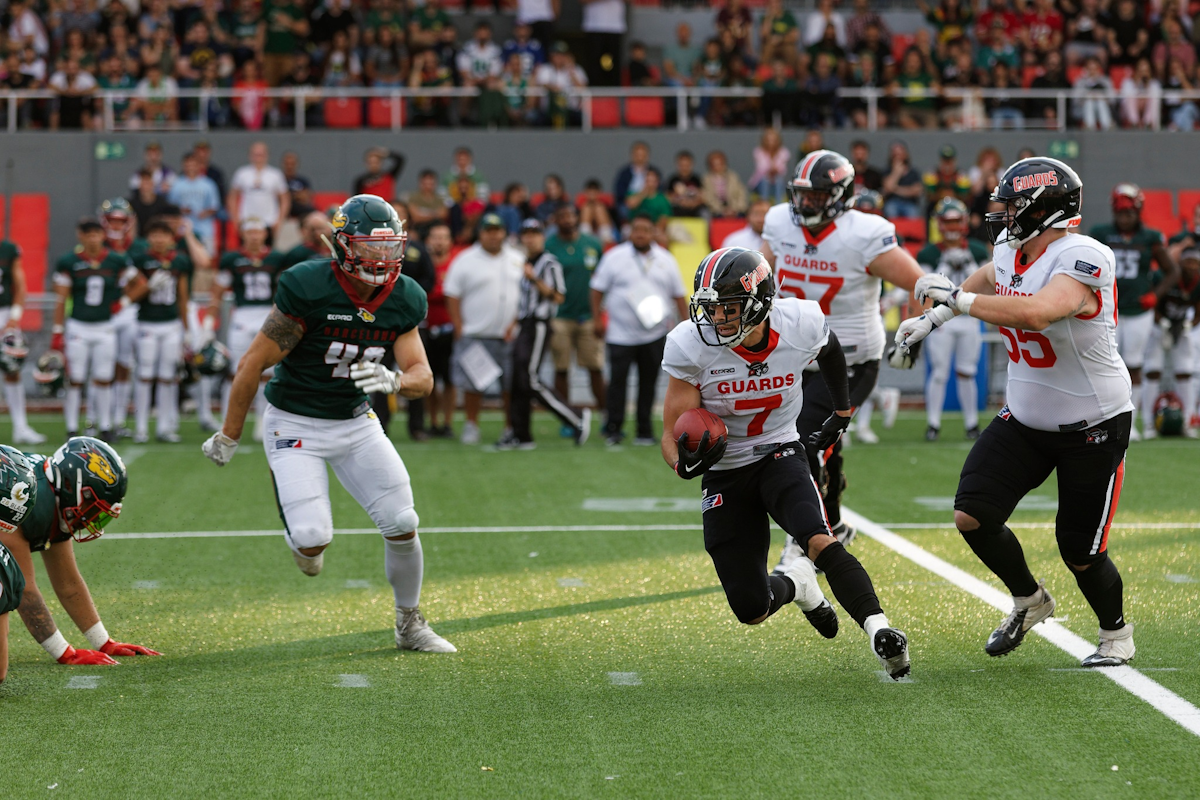
Silas Nacita finding running room. Photo: Lars Kauz
Nacita of course is in a very difficult situation as a player. Although listed as a running back, it’s unfair to limit him to that as he was the entirety of the Guard’s offensive and team identity. Neither team found much success. The Kings were unable to finish the season and the Guards were a bottom-half team. Young European running backs exploded onto the scene in 2023, Dawid Brzozowski (Wroclaw Panthers), Tomiwa Oyewo (Munich Ravens), and Karri Pajarinen (Vienna Vikings), alongside the more established backs in Glen Toonga, Tobias Bonatti (Tirol Raiders), and Florian Wegan (Vienna Vikings). Zero American running backs rushed for 500 yards in 2023. Six Europeans went above that mark.
What will happen in 2024?
This leads us to the present day, in the 2024 season the Milano Seamen are the only team thus far to announce an American in that position, Patrick Carr. Given the loss of a key offensive lineman, the signing of a new offensive coordinator, and a lack of blocking receivers it’s natural to question how much value will be able to be brought. In only three seasons, Europe has seen a full turn to rely on Europeans. A big factor is the match-up potential. A receiver who matches up with a single European defensive back can provide a bigger mismatch than a running back whose production is massively reliant on the offensive lines and front seven on the defense. Going forward, I believe that the pool of Europeans will be a lot more enticing in terms of value, production, and offensive flexibility. Moreover, the emergence of homegrown options in nearly every country has further emphasized the value of production.

Prague Lions RB Adam Žouželka Photo: Prague Lions
Adam Žouželka of the Prague Lions is a prime example of this. Last season it was all but confirmed he had offers other than Prague but chose to stay local and saw a lot of praise as a player to watch in the future.
In summary
Overall, it is clear that there has been some trial and error to start the league in team building but running back has seen the most change in that period. The mass number of elite options at receiver, the pool of talented Europeans, the notable improvement every season from the European options, the match-up issues and the production value have seen it become nearly an exclusive role for the Europeans. We may go another year without seeing an American hit 500 rushing yards, given that every season only two have hit 1,000 it’s extremely unlikely that we will see an American hold the rushing crown for a very long time, if ever.
Until next time.
